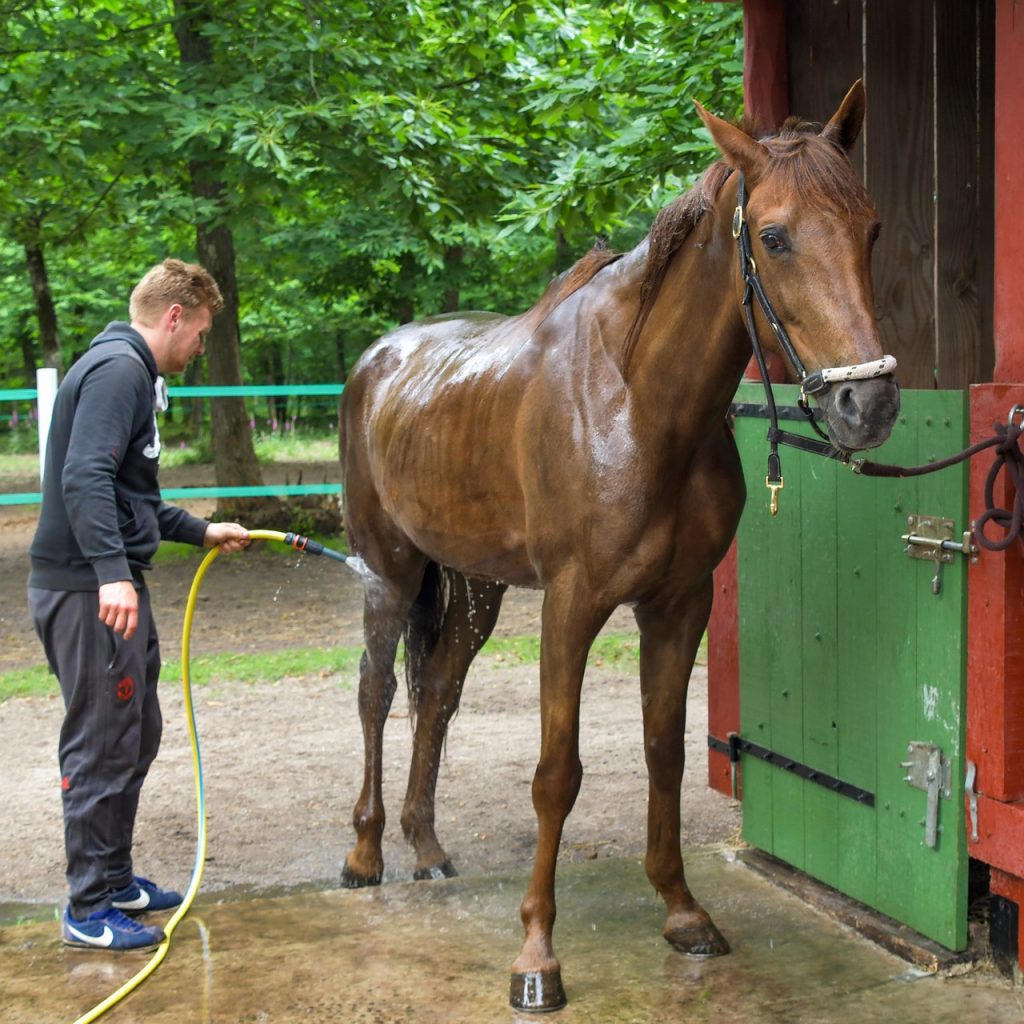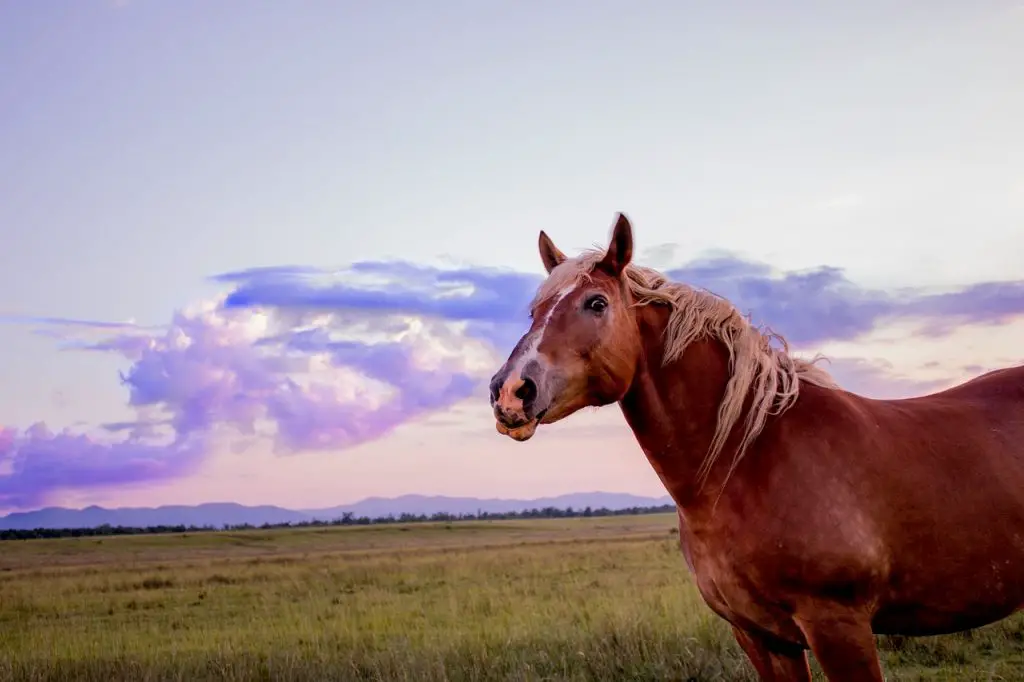Last Updated on July 29, 2020 by Allison Price
Cerebrovascular accident is usually referred as a stroke in horses. This is almost the same with a human stroke as it is then caused by brain hemorrhage. Knowing its symptoms early will save your horse’s life and will avoid you extra vet expenses. When blood flow is usually interrupted, a stroke in horses occurs. Brain depends on the blood flow than any other organ. Normal blood flow delivers enough oxygen and nutrients. If the blood supply is not enough, organ functions will be then disrupted.
There are two types of strokes among horse. These are heat stroke and cerebrovascular accident
Heat Stroke
Heat stroke is usually caused by hot and humid weather. This is along with intense exercise where heat production increases by up to 50%. Heat stroke can cause digestive, neurological, nervous, and muscular systems to stop functioning. This will cause your horse’s body on a complete shutdown. It may also begin as dehydration or heat exhaustion, with a heat stroke as a result. Understanding the signs of heat exhaustion is vital. This is so you can help your horse before its condition gets worse.

Signs and Symptoms of a Heat Stroke
The following are early signs and symptoms of a heat stroke:
- Significant sweating
- Increased heart rate (greater than 60 beats per minute)
- Rapid breathing (greater than 80 breaths per minute)
- Dehydration
- Fatigued
- A rectal temperature of more than 104 degrees
- Eyes appear sunken and facial expression dull
- Lack of urination
- Convulsions and collapse
If your horse’s condition worsens, here are the following signs may be present:
- A fever greater than 106 degrees
- Skin feels dry and warm
- Signs of issues with the central nervous system
- Weaving and walking unsteadily
- Falling down and struggling to get up
- Lack of awareness of their surroundings
- Kidney or liver failure
- Stomach pain
- Swelling of the lungs
- Sudden respiratory difficulties
- Seizures
- Coma
Diagnosis and Treatment
If your horse is suffering from heat stroke, contact your veterinarian immediately. Move your horse into a shady area with a fan blowing at him. You can use a sponge or a hose to put cool water on your horse’s neck and body once he is in a cooler location. Focus on the large veins of his neck and the thin-skinned parts in the groin. Rubbing alcohol can be usually used on the back and neck areas to help then cool down. You can offer your horse small quantities of cold water. Electrolytes may also be then given orally. In severe cases, intravenous fluid therapy is necessary. This is to treat dehydration, electrolyte loss, and shock.
Equine Neurological Disorder
Cerebrovascular Accident is an Equine Neurological Disorder. This results in a lack of oxygen to the brain. This kills off cells that are necessary for normal function. If immediate care is not sought, death is a likely result. There are two types of Cerebrovascular Accident. These are Ischaemic Stroke and Haemorrhagic Stroke.
Ischaemic stroke is usually caused by a sudden lack of blood supply to the brain. Ischaemic stroke can be then divided between thrombosis and embolism. Thrombosis is those diseases that cause an artery to narrow. Embolism is those diseases that cause an artery to clog by material from somewhere else in the body.
Haemorrhagic stroke is bleeding within the brain caused by a burst blood vessel. There may be leakage of blood within the brain tissue itself (intraparenchymal haemorrhage). Sometimes, it is between the brain and the skull (subdural or subarachnoid haemorrhage). The bleeding location depends upon where the damaged blood vessel is usually located.
Signs and Symptoms
The loss of balance and inability to stand is the first symptom of a stroke. A horse will suffer release in bowels. Also, the horse will appear swollen. Vacant staring almost trance like at times. A less noticeable stroke symptom is an elevated respiratory and heart rate. This combined with a temperature of higher than 103 degrees F and dehydration are all signs of a stroke. Other symptoms include tilting of the head, balance loss, loss of vision, and dropping. Neurological symptoms of horses are seizures, erratic behavior, facial paralysis, and more.
Diagnosis and Treatment
If you think your horse might have a neurological problem, it’s time to call your veterinarian. That is the only thing you can do. Your vet will find out what causes the stroke. It can be the lack of calcium phosphorus in your horses blood or other reasons. Your vet may give your horse some steroids and other drugs. This is for treatment, yet, it’s not always effective.
Takeaway
The recovery time for horses who suffered stroke is lengthy. This sometimes also depends on their diagnosis. Horses should show signs of health improvement within two weeks after the diagnosis. Most horses tend to recover within one to two months. That is why it is very important to detect signs and symptoms of stroke when they occur. Recovery may not be possible when a vital part of the brain has been then damaged by the stroke. While they are drugs used for treatment, they are not usually that effective.



